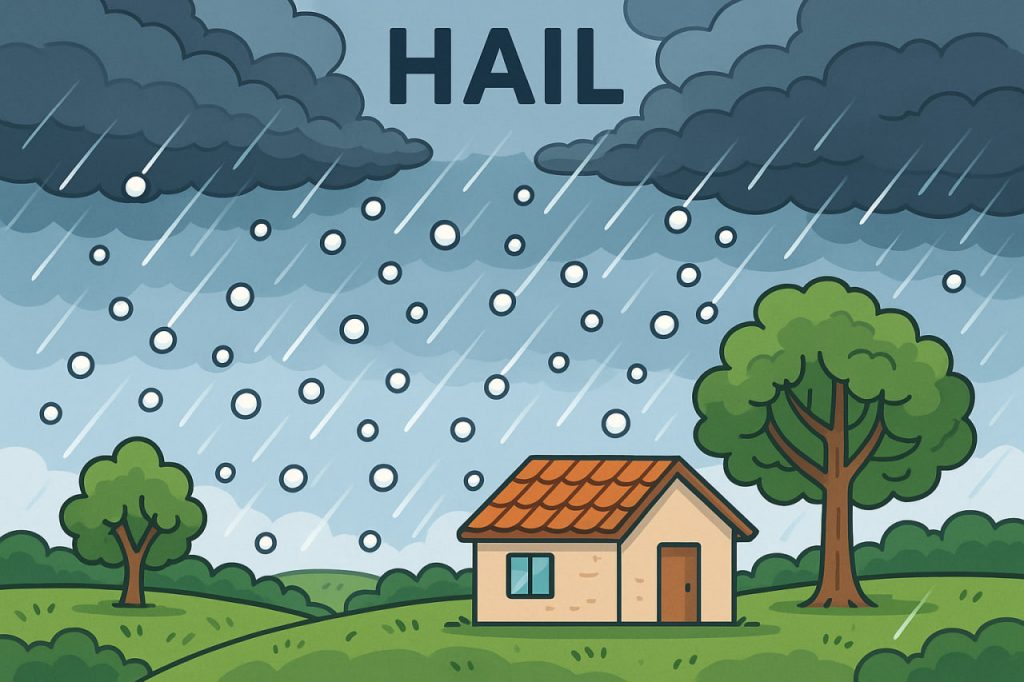Hail is a type of solid precipitation that forms during strong thunderstorms. Unlike snow, which forms in cold weather, hail is made of layered ice pellets that grow larger while being tossed inside storm clouds. When hailstones become too heavy, they fall to the ground, sometimes causing serious damage to crops, vehicles, buildings, and even injuring people and animals.
How Hail Forms
Hail develops inside cumulonimbus clouds, which are tall, dense clouds that often produce lightning, thunder, and heavy rain. Within these clouds, updrafts of warm air carry water droplets high into the atmosphere, where temperatures are well below freezing.
These droplets freeze and begin to fall. As they are lifted again by strong updrafts, more layers of water freeze onto them. This process continues, adding layer after layer of ice, until the hailstone becomes too heavy to stay suspended and falls to the ground.
Conditions Needed for Hail
Hail formation requires several specific conditions:
- Strong updrafts to keep ice particles suspended long enough to grow
- Cold temperatures high in the cloud
- Abundant moisture for freezing layers
- Thunderstorm activity, especially in spring and summer
The stronger the updraft, the larger the hailstone can become—sometimes reaching the size of golf balls or even softballs.
Impact of Hailstorms
Hail can cause significant destruction in just a few minutes. Common effects include:
- Damaged crops and farmland
- Broken windows, dented cars, and roof damage
- Injuries to people and animals caught outside
- Disruption to transportation and power lines
Farmers, insurance companies, and meteorologists closely monitor hail risk, especially during severe weather seasons.
How Is Hail Measured?
Meteorologists measure hail size by comparing it to common objects:
- Pea-sized: ~6 mm
- Marble-sized: ~1.2 cm
- Golf ball-sized: ~4.5 cm
- Baseball-sized: ~7 cm
- Softball-sized: ~10 cm
Radar systems can detect hail formation in storm clouds, helping issue early warnings to reduce risk.
Hail vs. Other Precipitation
Hail is often confused with sleet or snow, but it is very different:
- Hail forms in thunderstorms and consists of layered ice
- Sleet is frozen rain that falls in winter
- Snow forms from frozen water vapor and has a fluffy, crystalline structure
Only hail grows by repeated freezing and lifting inside storm clouds.
Glossary
- Hail – solid balls or lumps of ice that fall from thunderstorms
- Thunderstorm – a storm with lightning, thunder, rain, and sometimes hail
- Cumulonimbus cloud – a tall, thick cloud associated with severe weather
- Updraft – a rising current of warm air within a cloud
- Precipitation – any form of water (liquid or solid) falling from the sky
- Radar – a system that detects objects using radio waves, used in weather forecasting
- Sleet – small ice pellets that fall in cold weather, not from storm updrafts


